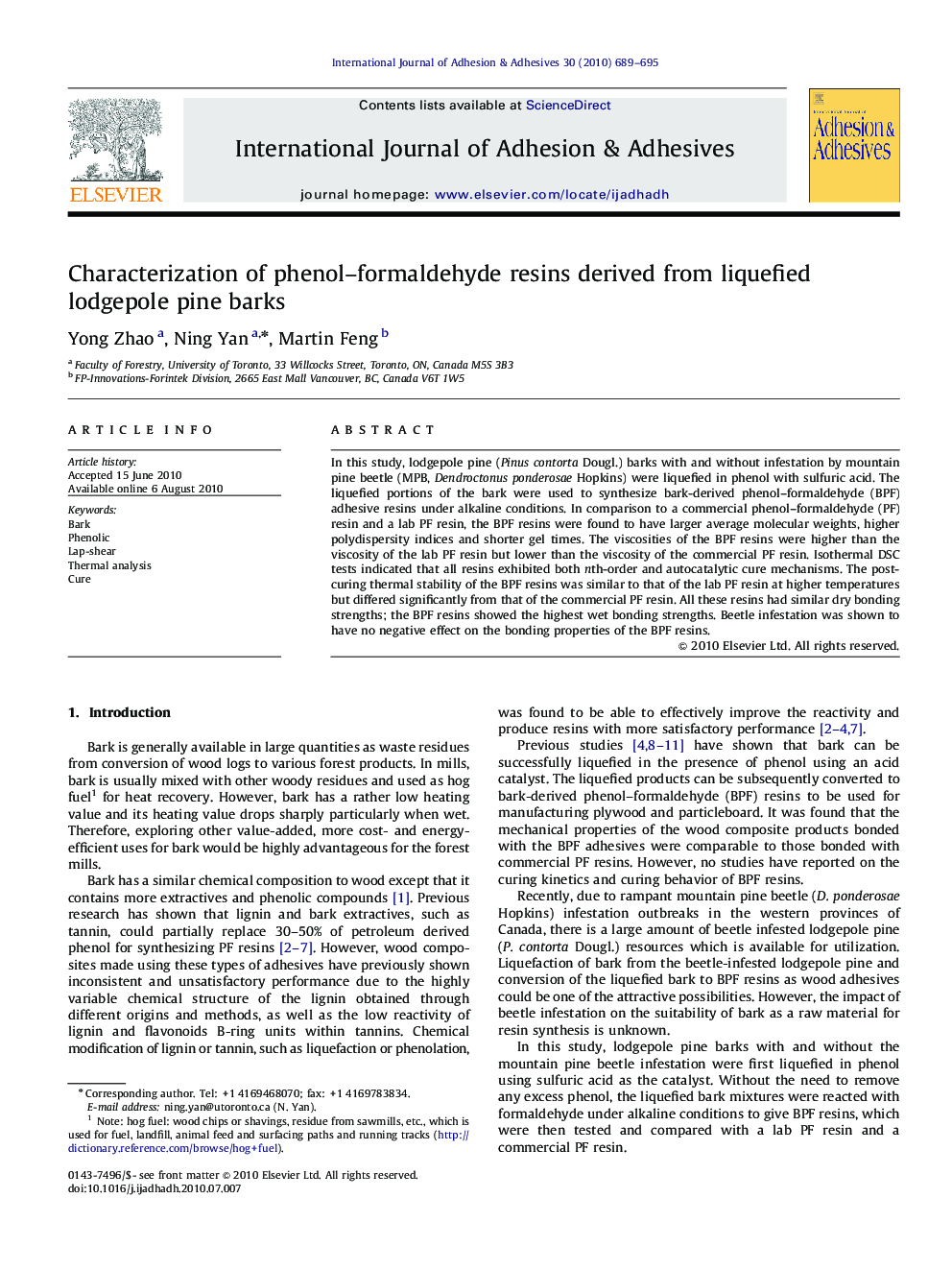| Article ID | Journal | Published Year | Pages | File Type |
|---|---|---|---|---|
| 776412 | International Journal of Adhesion and Adhesives | 2010 | 7 Pages |
In this study, lodgepole pine (Pinus contorta Dougl.) barks with and without infestation by mountain pine beetle (MPB, Dendroctonus ponderosae Hopkins) were liquefied in phenol with sulfuric acid. The liquefied portions of the bark were used to synthesize bark-derived phenol–formaldehyde (BPF) adhesive resins under alkaline conditions. In comparison to a commercial phenol–formaldehyde (PF) resin and a lab PF resin, the BPF resins were found to have larger average molecular weights, higher polydispersity indices and shorter gel times. The viscosities of the BPF resins were higher than the viscosity of the lab PF resin but lower than the viscosity of the commercial PF resin. Isothermal DSC tests indicated that all resins exhibited both nth-order and autocatalytic cure mechanisms. The post-curing thermal stability of the BPF resins was similar to that of the lab PF resin at higher temperatures but differed significantly from that of the commercial PF resin. All these resins had similar dry bonding strengths; the BPF resins showed the highest wet bonding strengths. Beetle infestation was shown to have no negative effect on the bonding properties of the BPF resins.
